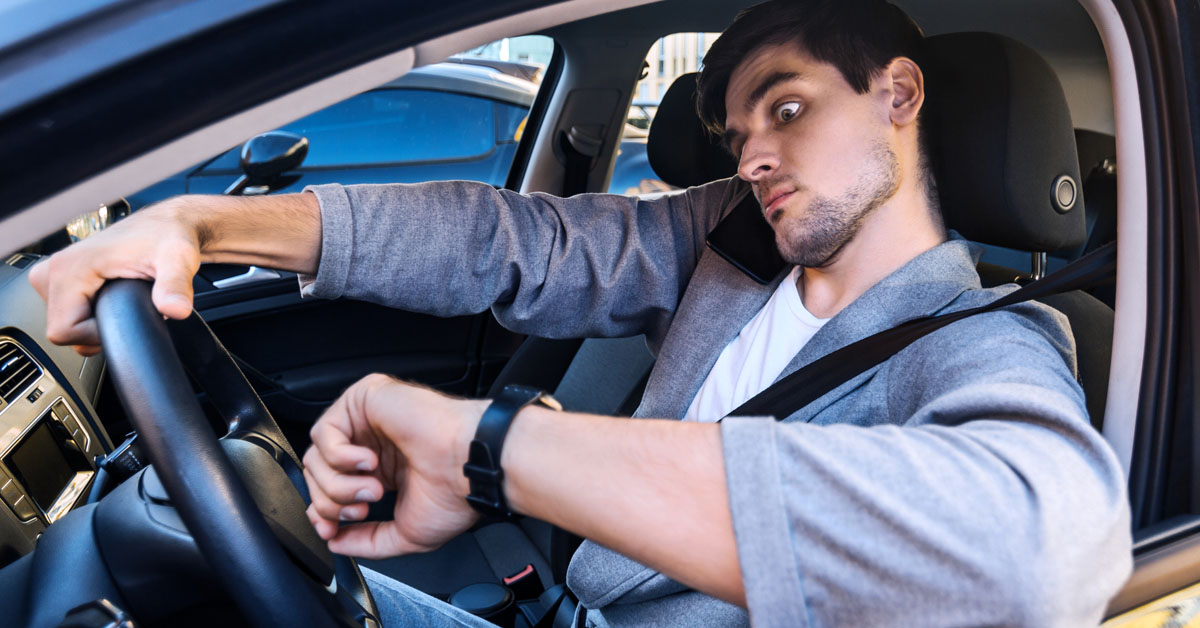What Matters Most? Real vs. Perceived Wait Times at Checkout

You know the feeling…
You’re zipping down the freeway, there’s somewhere you have to be, and the car in front of you might as well be moving backwards. So you decide to switch lanes. Just as you let out a sigh of relief, you notice you’re behind another car – one that seems to be moving even slower! Then that sluggish car from your previous lane suddenly appears to soar right past you. “I should’ve just stayed in that lane!”
Checkout lines at the store have the same effect. You’ve probably jumped from one line to the next, thinking it’ll be faster. Then you notice people who were behind you in the previous line checking out faster than you are in your new line. It’s frustrating, right?
This is the psychology of waiting.
It’s the difference between what’s real versus what’s perceived.
Real wait times are simple. It’s the actual amount of time spent waiting in a line. But perceived wait times are a different story. While a real wait time at checkout might be five minutes, the perceived wait time could feel like ten minutes.
Plenty of research has been published over the years about the difference in wait times. Retailers often focus on how to lower real wait times. That’s always helpful. For busy customers who are short on time however, satisfaction is dependent upon the perceived wait time. If a customer perceives their wait time as long, satisfaction decreases. When customers perceive wait times as short, satisfaction increases.
For chronic clock-checking customers, the real wait time may become more important. For most customers though, it’s largely about the feel of the wait.
QuikLine is a fix for both real and perceived wait times.
QuikLine’s call-forward technology improves checkout efficiency, decreasing real wait times by 15-35%. The system can plug directly into the point-of-sale system, so whenever a register opens or closes, QuikLine adjusts to show customers when it’s their turn to check out and what register to approach. Lines can be reconfigured in real-time without staff stepping away from their stations. (By the way, check out our previous post to see what type of line configuration helps save the most time!) By allowing staff to continue their jobs and letting automated technology facilitate the queue flow, customers move through at a faster pace.
When it comes to perceived wait times – a key to customer satisfaction – QuikLine is even more effective. The technology can lower perceived wait times by up to 40%. For a customer who feels short on time, this is a game changer for the checkout process.
Overhead displays incorporate visual and audio messaging to efficiently direct traffic. Not only does this keep the customer’s mind focused, it reduces their anxiety about being in an ineffective line. It simply looks better! Retailers appear more productive and proactive about helping customers on the final phase of their retail journey, checkout. The screens are customizable with logos, graphics, fonts, colors and styles so they’re consistent with the retailer’s brand. They also provide opportunities for promotional videos, marketing messages, and even COVID-19 safety reminders. All of this holds the customer’s attention, which dramatically lowers the perception of time spent in line.
Checkout is like a highway – and customers want to speed through!
QuikLine may not be able to help next time you’re stuck in traffic on the freeway. But it can shift gears for your in-store queues to keep customer traffic moving efficiently and empower your staff to work at full horsepower. Retailers across the U.S. have started implementing QuikLine – and you could be next. It’s basically the Tesla of checkouts!
Can we help you improve your retail checkout process? Contact us so we can have a conversation! [email protected]